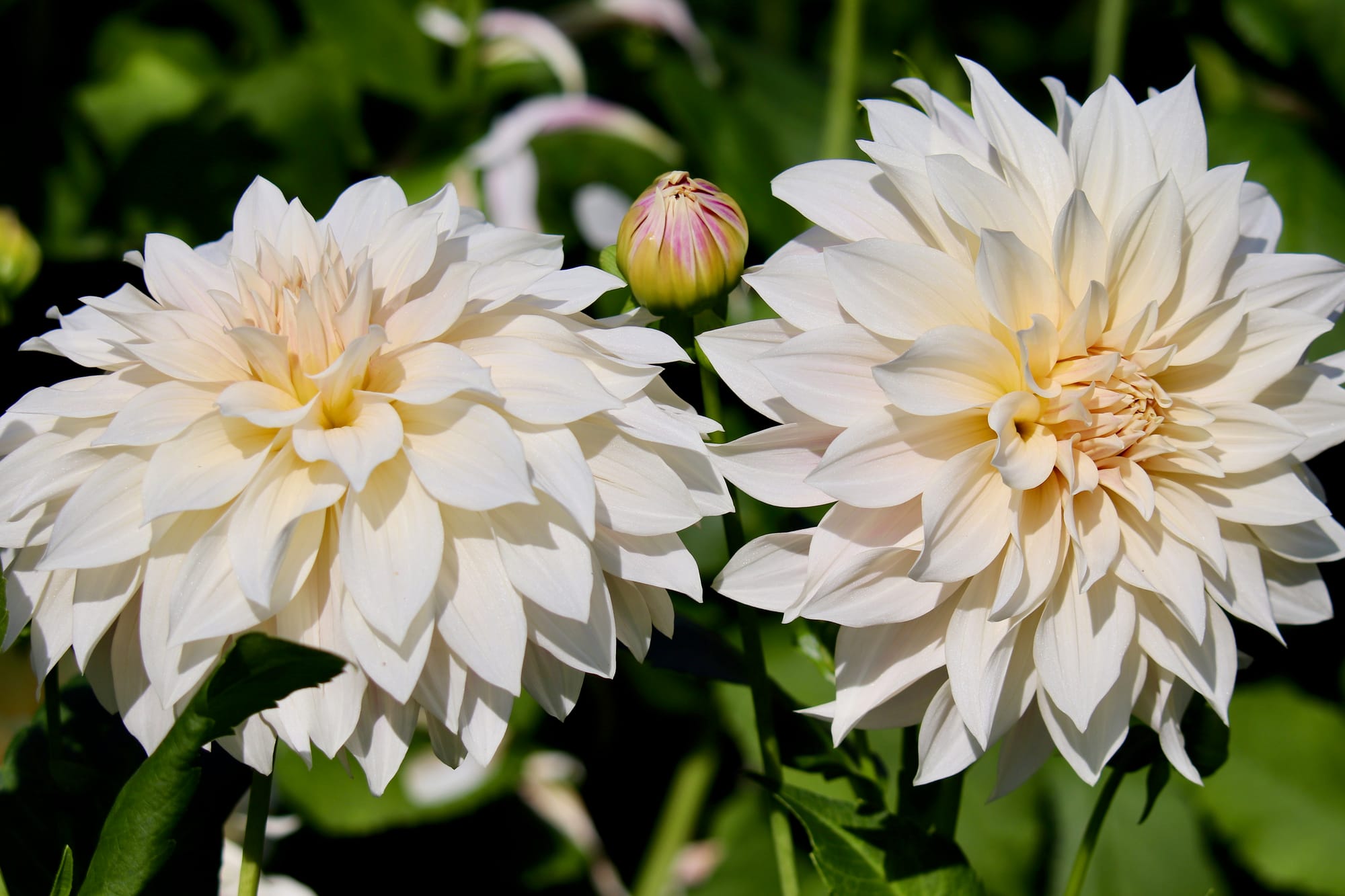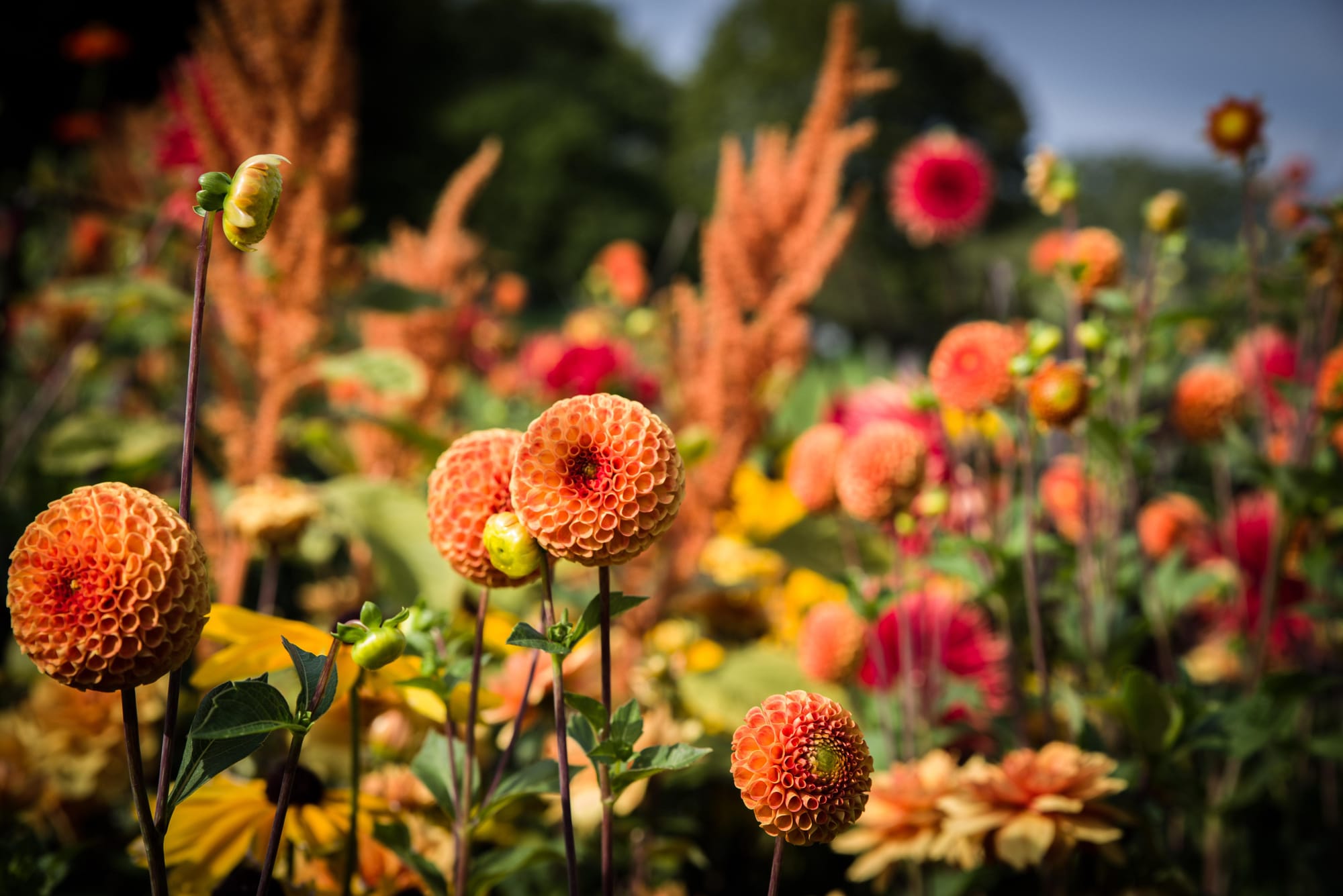Why Dahlias are a Pain – But I'm Still Growing Them

I can't think of many flowers we grow in our gardens that are this much work, but many of us keep coming back for more year after year. However, I'm here for it.
Often, you start making decisions about the varieties of dahlias you want to grow months in advance. They start going on sale as early as August the year before they are shipped. Then you order them and wait a couple months. Though you can wait until the last minute in the Spring and grab some online, you just might be limited in your selection. However, there are so many thousands of varieties out there, you can always find something.
After you have grown them and you have a killing frost at the end of the season, you might have to dig them up, clean and store them over the winter. And keeping an eye on them during those months in case there are any problems like a rotting tuber or something is drying out. The tubers need to be divided (or not) at some point, and replanted after danger of the last frost has passed.
Then you have to replant them every single year, and stake them. If you can get through all of that, much of the rest of the process is general flower maintenance.
If you're growing them from seeds, you're managing plants during their first year. And often they aren't "keepers" because, well, they don't look great. I often hear dahlia growers say they only keep one out of every 100 dahlias they grow from seeds. However, if you're making your own crosses in a closed garden (or hand pollinating) you might get a higher percentage of keepers. If you're growing them en masse in an open pollinated field with open-centered blooms, you might be lucky to get one keeper out of 10,000 or 100,000 flowers. If you have dahlias grown from seeds you want to keep, then they begin the tuber cycle as you dig them up at the end of their first season.
If you live in a warmer climate, you might be able to keep the tubers in the ground during the winter. Though you may need to cover them as a precaution. Or grow them closer to walls or your home for added protection.
Dahlias also don't have a scent, which is another problem. Visitors to your garden will probably lean in for a smell and...smell nothing.
There are few flowers that can deliver the impact of dahlias, especially the dinner plate varieties. They also can bloom for several months when started earlier. Or if you're starting from a clump of tubers instead of just one tuber, they can get off to a faster start.
Dahlia blooms are quite a spectacle to see in person and have a wide range of sizes, shapes and colors. Grow a couple Café au Lait dahlias if you want something productive and also beautiful. Though CAL won't do well at a dahlia show because of their front facing blooms, they can really bring a certain level of whimsy to a garden space.
Try something like Emory Paul if you aren't afraid of gawkers pulling up to your garden and staring. I've even seen some traditional classics at local garden centers, though your results may vary in terms of quality and health of the tubers. So if you've ever wanted to test the waters on a budget, that might get you started.

You will probably have to order specialty dahlias months in advance, but once you have them, often you can keep them going indefinitely. Unless you just want to buy them new every year and try something different, or simply avoid the winter storage headaches.
There are striking cactus dahlias, geometric looking ball dahlias, anemone dahlias, waterlily, collarette, and all of those huge formal and informal decorative dinner plate dahlias. And a LOT more, with each having many color variations.
While they are a high maintenance flower, they can deliver months of blooms to your garden like few other plants.
